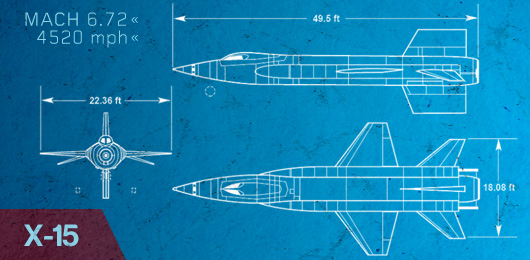Everybody has that moment when they realize they don’t know about something that they should probably know about. Whether it’s history, language, science, or cultural phenomena, you’ve felt the stinging personal embarrassment of a moment wherein you realize there’s some common knowledge that isn’t so common. Don’t feel bad; nobody knows everything. Nobody, that is, except me and my sidekick, The Internet!
Somewhere in the world, a confused soul begs the question…
What’s the fastest speed ever achieved by a human being?
We all want to get from Point A to Point B faster. We bemoan the shortcomings of conveyances that still aren't up to the speeds we feel we deserve (Amtrak vs. the Japanese Maglev, for example). But are you familiar with the specific vehicular speeds of which our world is capable? Other than the occasional “some engineers in the desert set a new land speed record, this week” report, we rarely talk about this subject despite the fact that everyone is interested in it.
So, just in terms of numbers, how fast is the fastest ever?
[Note: only speeds attained by vehicles/objects containing human beings are being considered – unmanned NASA space probes do not count because robots have no emotions.]
On the ground, the fastest speed clocked by a human being was 760 face-melting miles per hour. In 1997 in the Nevada desert, Royal Air Force pilot Andy Green broke the sound barrier in a British-built jet-propelled car dubbed the ThrustSSC. The 54-foot vehicle had as much power as the F-4 Phantom II fighter jet and this “car” had a fuel efficiency that worked out to roughly .04 miles per gallon (it consumed nearly 5 gallons per second).
In the air, the record belongs to the US Air Force’s X-15 jet, which reached speeds of Mach 6.72. Translation? 4520 miles per hour. If you need a point of reference for this astronomical figure, I’ve got it for you: at that speed, you could circumnavigate the globe in just over 100 minutes. It should be pointed out that the X-15 flew at altitudes of over 300,000 feet which technically means its record-setting runs qualify as spaceflights (the pilots were rewarded astronaut wings) but we can’t compare anything to our final entry on the list…
When it comes to vehicles built for space travel, the speed record is staggering. Upon re-entry to the Earth’s atmosphere on May 26, 1969, the Apollo 10 Lunar Module reached speeds of 24,791 miles per hour. (Hang on, let me pick up the pieces of my exploded brain… okay.) If NASA was capable of effectively maintaining that sort of speed with their spacecrafts, they could reach the Moon in the time it would take you to travel from Los Angeles to London (around 10 hours). No peanuts on the spaceflight, though.
Now you know.

















